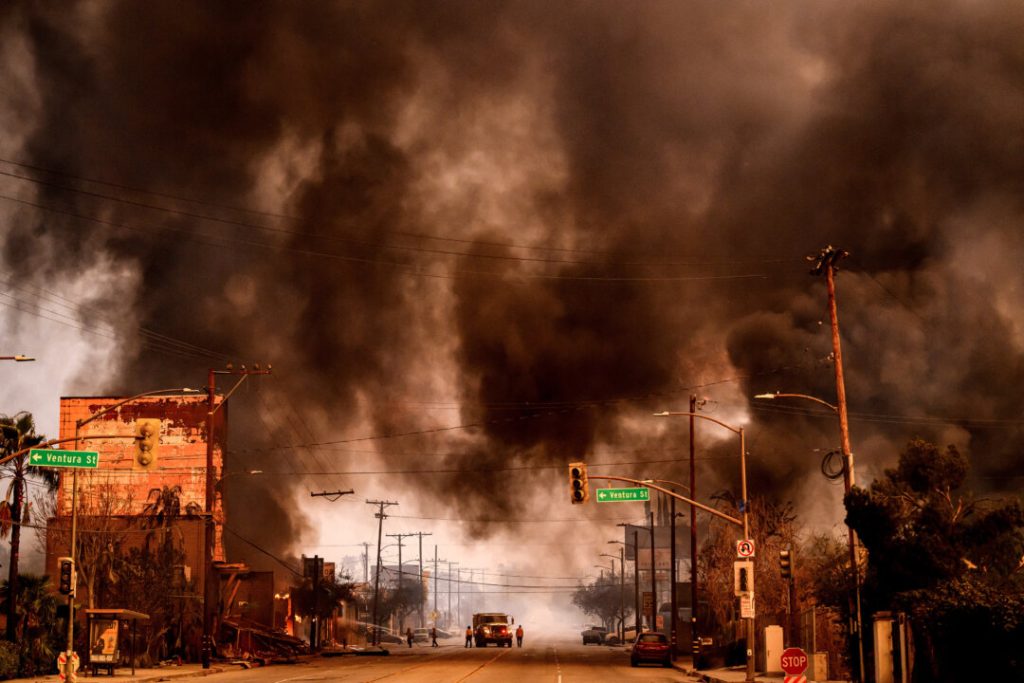The Los Angeles fires that swept through in January have had a devastating impact, and recent studies suggest they may have been linked to around 440 excess deaths. The Palisades and Eaton fires were particularly destructive, directly resulting in 31 tragic deaths as the flames ravaged communities and destroyed homes. This alarming information comes from an August 6 study by the American Medical Association, highlighting the severe consequences of these fires.
Residents in the affected areas are grappling with the aftermath, trying to rebuild their lives and homes. The fires didn’t just claim lives; they also left a trail of destruction that will take years to recover from. Entire neighborhoods were reduced to ashes, leaving many without a place to call home.
Beyond the immediate destruction, the fires have also raised concerns about air quality and long-term health impacts. The smoke and pollutants released during the fires have contributed to respiratory issues and other health problems for residents. This has put additional strain on healthcare services, already stretched to their limits.
The response from local authorities and emergency services during the fires was swift, but the scale of the disaster was overwhelming. Many firefighters worked tirelessly to contain the blazes, putting their lives on the line to protect others. Their bravery and dedication were a beacon of hope amidst the chaos.
In the aftermath, community support has been a crucial factor in helping victims cope with their losses. Neighbors have come together to offer shelter, food, and emotional support to those affected. This sense of community resilience is a testament to the strength and solidarity of the people.
The economic impact of the fires is another concern, as businesses and livelihoods have been disrupted. Many small business owners are facing significant challenges in reopening and continuing their operations. The road to recovery is expected to be long and arduous.
Insurance claims have been pouring in, with homeowners seeking compensation for their lost properties. However, the process is often complicated and slow, adding to the frustration of those trying to rebuild. It’s a reminder of the importance of being prepared for natural disasters.
The environmental damage caused by the fires is extensive, with large areas of natural habitat destroyed. Wildlife populations have been severely affected, struggling to find food and shelter in the altered landscape. Conservation efforts are now focused on restoring these ecosystems.
Amidst these challenges, there is also a conversation about the role of climate change in exacerbating such disasters. Some experts argue that rising temperatures and prolonged drought conditions have contributed to the severity of the fires. This has sparked debates on the need for more proactive environmental policies.
The fires have also highlighted the importance of effective fire management strategies. There is a call for better forest management practices to prevent such large-scale disasters in the future. This includes controlled burns and clearing of dead vegetation to reduce fuel for fires.
Local government officials are now tasked with reviewing and improving emergency response plans. The goal is to ensure quicker and more efficient responses to future incidents. Lessons learned from these fires are expected to shape policies and preparedness measures.
The impact of the fires extends beyond the immediate physical damage, affecting mental health as well. Many residents are dealing with trauma and stress related to their experiences. Support services and counseling are essential to help them cope with these challenges.
As communities work towards recovery, there is a focus on rebuilding stronger and more resilient structures. This involves not just physical reconstruction, but also strengthening community ties and support networks. It’s about creating a safer and more prepared environment for the future.
The role of technology in disaster management has also come under scrutiny. Improved communication systems and early warning mechanisms are seen as vital tools in mitigating the impact of fires. Investing in such technologies is a priority for many local authorities.
Despite the challenges, there is hope and determination among the people. The spirit of resilience and unity is evident as they work together to overcome the obstacles. It’s a testament to the human capacity to endure and rebuild in the face of adversity.
The Los Angeles fires have been a wake-up call for many, underscoring the need for better preparedness and response strategies. As the community moves forward, there is a commitment to learning from this experience. It’s about building a future where such tragedies are less likely to occur.



